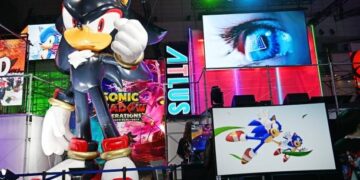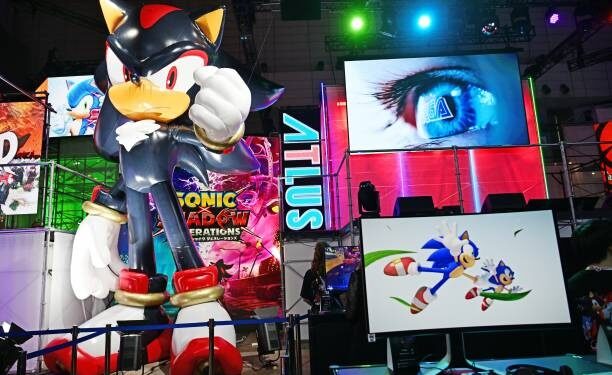Sonic the Hedgehog: A Cultural Icon Revitalizing Japan’s Global Influence
Sonic the Hedgehog, once a fading relic of the gaming past, has made a spectacular comeback—not merely as a cherished video game character but as a potent symbol of Japan’s cultural resurgence on the world stage. This transformation is not just significant for Sonic’s legacy but also serves as a vital indicator of how Japan is reasserting its influence in the increasingly competitive landscape of global entertainment. In this article, we’ll delve into Sonic’s journey and explore the implications for Japan’s creative industries.
The Origins of Sonic the Hedgehog
Sonic the Hedgehog first dashed onto the scene in the early 1990s, designed to rival Nintendo’s iconic character, Mario. With his vibrant blue hue, attitude, and lightning-fast gameplay, Sonic quickly captured the hearts of gamers worldwide. However, as Sega’s hardware business faced challenges and market share declined, Sonic’s popularity began to wane. For years, this beloved icon remained a nostalgia-inducing figure, somewhat relegated to the annals of gaming history with only sporadic relevance.
The Revival: Sonic in Live Action
The landscape began to shift dramatically with the release of the live-action Sonic the Hedgehog movie in February 2020. The film, which surprised many critics and viewers alike, grossed hundreds of millions of dollars globally, breathing new life into the franchise. The successful sequel, launched in 2022, not only enthralled audiences but also bridged the generational gap, inviting both long-time fans and a new, younger audience to the world of Sonic.
These films represented more than mere entertainment; they helped redefine Sonic as a versatile multimedia star, opening doors for various collaborations that extend far beyond the gaming realm, such as merchandise, toy lines, and animated series.
Sonic as a Cultural Ambassador
Japan has long utilized its cultural exports—including anime, manga, and video games—to craft a distinctive global identity. Sonic’s revival embodies this strategy effectively. The character has evolved into a cultural ambassador, appearing in tourism promotions, fashion collaborations, and even as a symbolic figure in international diplomacy. Sonic has transcended his limitations as just a game character; he now represents a broader cultural narrative that celebrates Japan’s innovative spirit.
A Successful Collaboration: Japan Meets Hollywood
One of the cornerstones of Sonic’s success is the synergy between Japanese intellectual property and Hollywood’s robust production capabilities. While the Sonic movies were produced in the United States, they retained the essence of Japanese creativity that birthed Sonic in the first place. This cultural partnership has fueled a cycle of interest, where successful film releases generate increased demand for Sonic video games and merchandise, subsequently sparking a newfound curiosity about Japanese culture as a whole.
This trend offers valuable lessons for other Japanese brands. By generating nostalgia through storytelling and fostering international collaboration, legacy franchises can experience revitalization. Sonic’s updated design and relatability resonate with modern audiences, effectively preserving the essence of what made him iconic originally while establishing a fresh connection.
Strengthening Japan’s Creative Status
The global embrace of Sonic the Hedgehog also fortifies Japan’s status as a leader in the creative industries. The resurgence of legacy characters like Sonic showcases a powerful truth: with the right approach, older franchises can be revitalized and remain relevant. Emotional engagement plays a crucial role in this connection; fans find themselves relating to Sonic’s vibrant personality, struggles, and adventures, transcending merely gaming to emotional storytelling.
The Power of Storytelling in Sonic’s Comeback
At the heart of Sonic’s remarkable revival is a commitment to rich storytelling. The live-action movies infused deeper layers of emotional complexity, transforming Sonic from a simple game sprite into a multifaceted character with aspirations and relationships. This approach embodies Japan’s long-standing tradition of weaving intricate narratives, now adapted for and embraced by a global audience. The films not only catered to existing fans but also allowed newcomers to understand and appreciate Sonic on a personal level.
Looking Ahead: The Future of Sonic
The future of Sonic appears exceptionally bright, as Sega ramps up development on new games, animated series, and merchandise related to the franchise. Rumors of expanding the Sonic cinematic universe add another layer of excitement and possibility, signaling the character’s role as a contemporary cultural bridge.
A Strategic Move for Japan
Sonic the Hedgehog’s comeback is more than a nostalgic resurgence; it represents a strategic move showcasing Japan’s ability to adapt, innovate, and thrive in an ever-evolving entertainment landscape. This transformation reflects a broader narrative of how cultural icons from the past can help redefine the future—and in Sonic’s case, potentially lead a new wave of global interest in Japanese artistry and storytelling.
In conclusion, if Sonic the Hedgehog can achieve this remarkable revival, it opens the door for other cultural icons from Japan to follow suit. By blending nostalgia, creativity, and strategic international collaboration, Japan’s cultural exports could usher in a new era of global influence, reinforcing the idea that legacy characters can remain relevant in a fast-paced world.
Sonic’s journey stands as an inspiring testament to the power of storytelling and entrepreneurial spirit, a reflection of Japan’s enduring creative vibrancy on the international stage. As we look ahead, there’s no telling how many more cultural exports may follow in Sonic’s footsteps, continuing to captivate audiences around the globe.














































